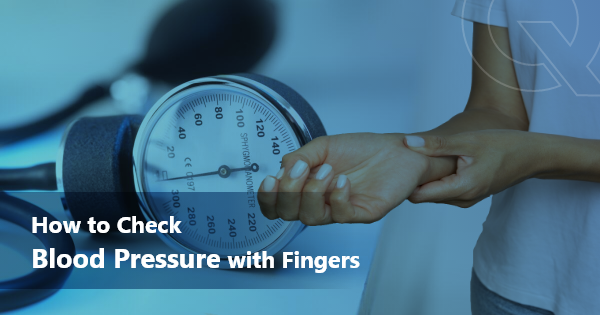Monitoring your blood pressure is crucial for maintaining good health and preventing cardiovascular issues. While traditional methods involve using a blood pressure monitor or sphygmomanometer, it’s also helpful to know how to check your blood pressure with just your fingers. This simple technique can provide a rough estimate when you don’t have access to specialized equipment or during emergencies. In this blog, we’ll walk you through the steps of checking your blood pressure using your fingers and discuss its limitations.
Contents
Understanding Blood Pressure
Before we delve into the finger-checking method, let’s understand what blood pressure is. Blood pressure is the force exerted by your blood against the walls of your arteries as your heart pumps it around your body. It’s typically measured in millimeters of mercury (mm Hg) and consists of two numbers: systolic (the higher number) and diastolic (the lower number).
When to Use the Finger Method
Checking blood pressure with your fingers is a basic method suitable for situations where more accurate equipment is unavailable. It can provide a rough estimate of your blood pressure, which might be helpful during emergencies or when you want a quick assessment of your general health. However, it’s important to note that this method is not a substitute for professional medical evaluation.
Step-by-Step Guide
Here’s how to check your blood pressure with your fingers:
1. Find a Quiet Place: Sit down and relax in a quiet environment for a few minutes.
2. Locate Your Pulse: Identify a suitable artery to check your pulse. The radial artery on your wrist or the carotid artery in your neck are commonly used for this purpose.
3. Use the Right Fingers: Use your index and middle fingers for this method. Your thumb should be avoided as it has its own pulse, which can interfere with the reading.
4. Find Your Pulse: Gently press your fingers on the chosen artery. You should feel the pulsation of blood beneath your fingers.
5. Count the Beats: Count the number of beats you feel for 30 seconds. Alternatively, count for 15 seconds and multiply the result by 2. This is your pulse rate, which is closely related to your heart rate.
6. Estimate Systolic Pressure: Continue feeling the pulse while gradually reducing the pressure until you can no longer feel the pulsation. Note the point at which the pulse disappears. This corresponds to your estimated systolic blood pressure.
7. Estimate Diastolic Pressure: Slowly release the pressure on the artery further until you feel the pulse return. The point at which the pulse reappears corresponds to your estimated diastolic blood pressure.
Interpreting the Results
It’s important to remember that this finger-checking method provides only a rough estimate of your blood pressure. Normal resting pulse rates typically range from 60 to 100 beats per minute. As for blood pressure, systolic pressure should ideally be around 90-120 mm Hg, while diastolic pressure should be around 60-80 mm Hg. If your finger measurements consistently show high or low readings or if you have concerns about your blood pressure, it’s crucial to consult a healthcare professional for a more accurate assessment and guidance.
Conclusion
Knowing how to check your blood pressure with your fingers is a valuable skill that can be useful in certain situations. While it offers a rough estimate, it should not replace regular check-ups with healthcare professionals using proper equipment. If you ever notice consistently abnormal results or have concerns about your blood pressure, don’t hesitate to seek medical advice. Proper monitoring and assessment are essential for maintaining your overall health and well-being.
Frequently asked Questions
Q1:Can I measure blood pressure by hand?
A1:You can also manually measure your blood pressure, but it’s a more complex process. It requires a blood pressure cuff with a squeezable balloon, an aneroid monitor, and a stethoscope to do so.
Q2:Is finger blood pressure accurate?
A2:Oncquest Labs recommend choosing an electronic blood pressure device with an arm cuff for accuracy. It’s advised to avoid wrist-based monitors and especially finger blood pressure monitors due to their unreliability.
Q3:Which hand is BP seen?A3:Manufacturers of home blood pressure monitors typically design their devices for measuring blood pressure in the left arm. However, the preferred arm for blood pressure measurement can vary based on the methods recommended by different medical societies and the specific home blood pressure monitor used. The blood pressure difference (ΔBP) is determined by subtracting the left arm blood pressure from the right arm blood pressure.



![Blood Test for Hair Loss [Male/Female] Blood Test for Hair Loss](https://oncquest-blog.s3.ap-south-1.amazonaws.com/blog/wp-content/uploads/2023/12/12044200/Blood-Test-for-Hair-Loss.webp)

